Dante's Inferno Nightclub/Speakeasy (1933-1938)
Introduction
Text-to-speech Audio
From 1933 to 1938, this was the site of the Kansas City nightclub and “sin palace” Dante’s Inferno. Dante’s was a nightclub and cabaret owned by Pendergast associate and organized crime figure Joe Lusco. On top of hosting some of Kansas City's best musicians, the club was well known for its drag performers, and table dancers and was also one of Kansas City’s best-known female impersonator cabarets. Here patrons could come for a drink, listen to the house band, and catch regular performances by drag performers and female impersonators.1
Images
Mr. Half and Half posing at Dante's Inferno
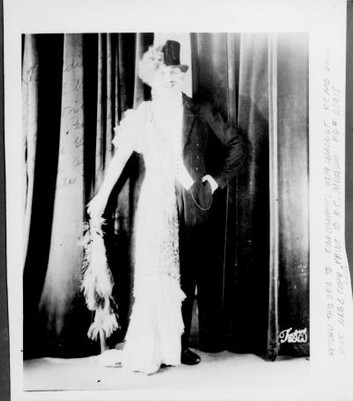
Dante's Inferno Menu ca. 1934
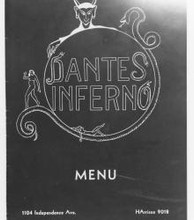
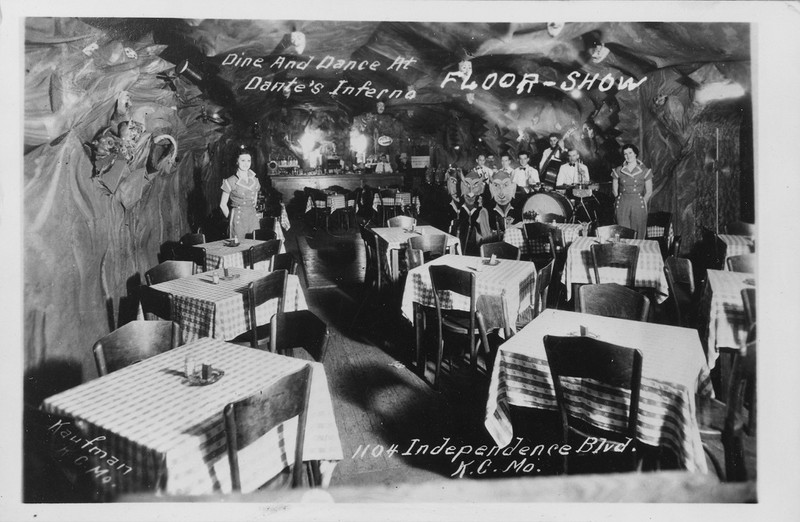
Dante's Inferno 1935
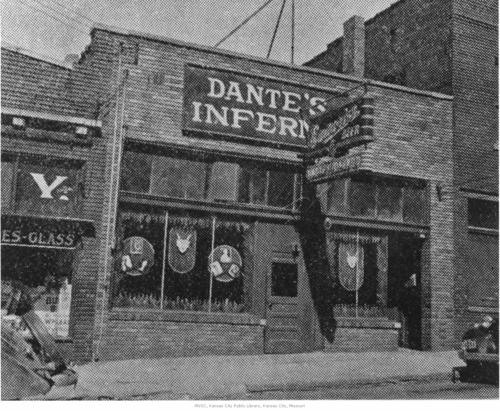
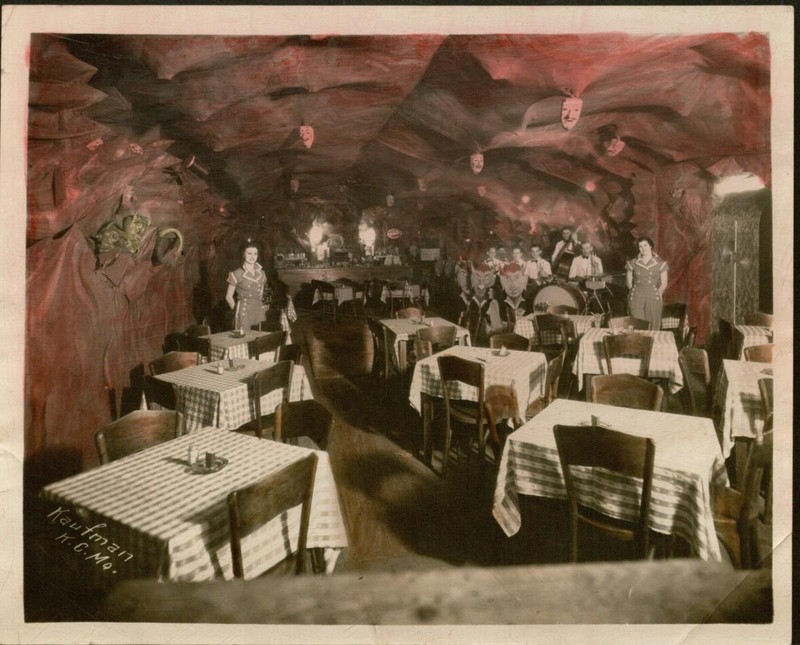
Backstory and Context
Text-to-speech Audio
Dante's Inferno was a popular nightclub and cabaret that operated during the height of Kansas City's Jazz era. The club was owned by Pendergast associate and organized crime boss Joe Lusco. The site was originally located on nearby Cherry Street but moved to Independence Avenue in 1933 after outgrowing its original location.1 The club was decorated in a hellish decor with flame red walls, waitresses in red satin uniforms, and satanic knickknacks placed throughout. 1On top of hosting some of Kansas City's best musicians, the club was well known for its drag performers and table dancers. Notable performers include Edna Mae Jacobs who performed in drag under the name "Eddie Lynn" and "Mr. Half and Half" a frequent performer at Dante's that performed as a singer, comedian, and impersonato while dressed as half man and half woman (pictured below).1,2 These female impersonators were far from unknown throughout the Kansas City jazz scene though their histories are rarely told.
Edna Mae Jacobs was one of Dante's most popular performers and impersonators. Edna performed under various stage names such as “Eddie Lynn” and “Lorelai Lynn”. She often performed at Dante’s as part of a sister act, performing with well-known female impersonator Billy Richards under the names “Eddie and Billie”.1 Though sister acts were common in female impersonator cabaret, Edna and Billy’s performance was quite different. Most female impersonators such as the well-known Billy Richards were biologically male performers who dressed up as a woman. But Edna was a female performer who represented herself on the stage as a man who dressed as a woman.1
In 1938 Joe Lusco was shot in an assassination attempt by Pendergast rivals. Though Lusco survived the assassination attempt he closed Dante's Inferno down for good.1,3
Sources
1Amber R. Clifford-Napoleone. Queering Kansas City Jazz : Gender, Performance, and the History of a Scene. Expanding Frontiers: Interdisciplinary Approaches to Studies of Women, Gender, and Sexuality. Lincoln: University of Nebraska Press, 2018. https://search-ebscohost-com.proxy.library.umkc.edu/login.aspx?direct=true&db=nlebk&AN=1900953&site=eds-live&scope=site.
2Stuart Hinds. From Proscenium To Inferno: The Interwar Transformation Of Female Impersonation In Kansas City. The Pendergast Years: Kansas City in the Jazz Age and Great Depression, Kansas City Public Library. (pendergastkc.org)
3Pearson, Nathan W. "Kansas City Jazz: From Ragtime to Bebop-A History". University of Illinois Press, 1987. EBSCOhost, https://search-ebscohost-com.proxy.library.umkc.edu/login.aspx?direct=true&db=cat07616a&AN=umk.b1999332&site=eds-live&scope=site.
Ida Minturn
Kansas City Museum
Missouri Valley Special Collections
Spencer Research Library at the University of Kansas
